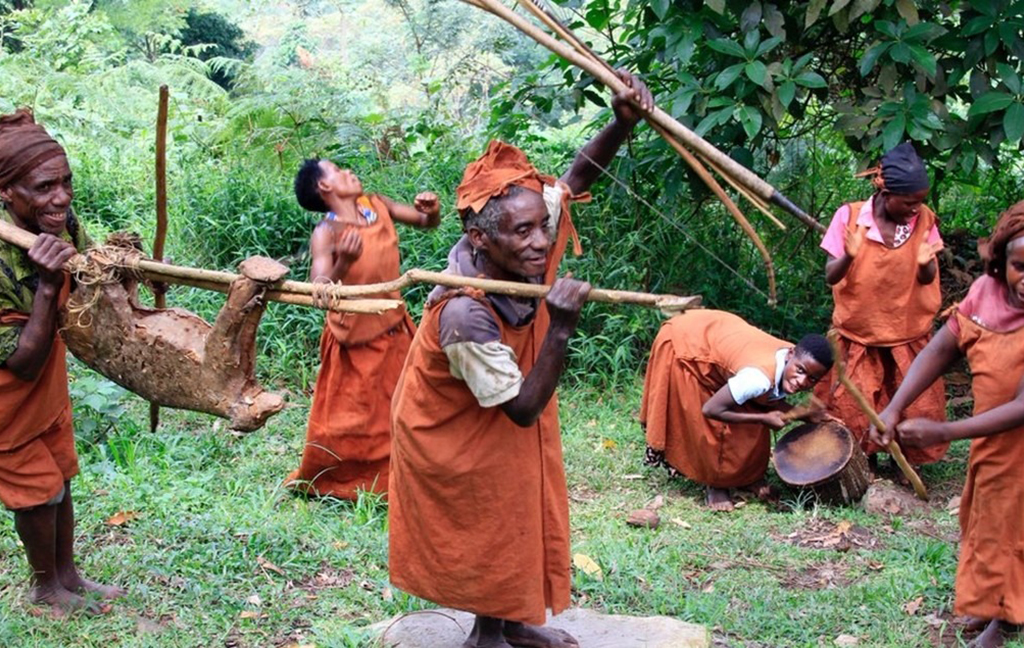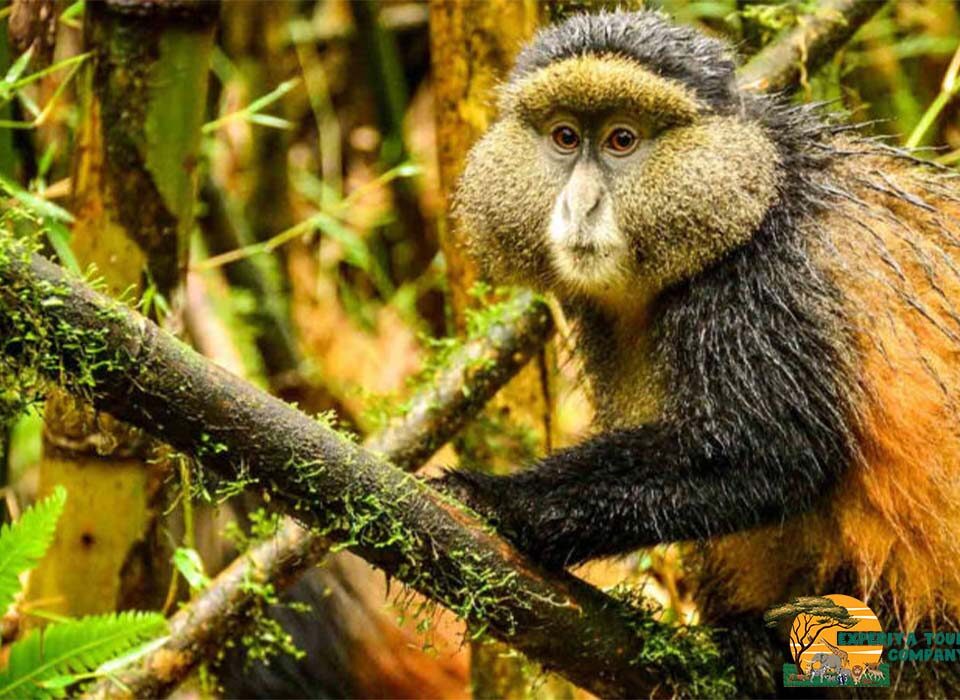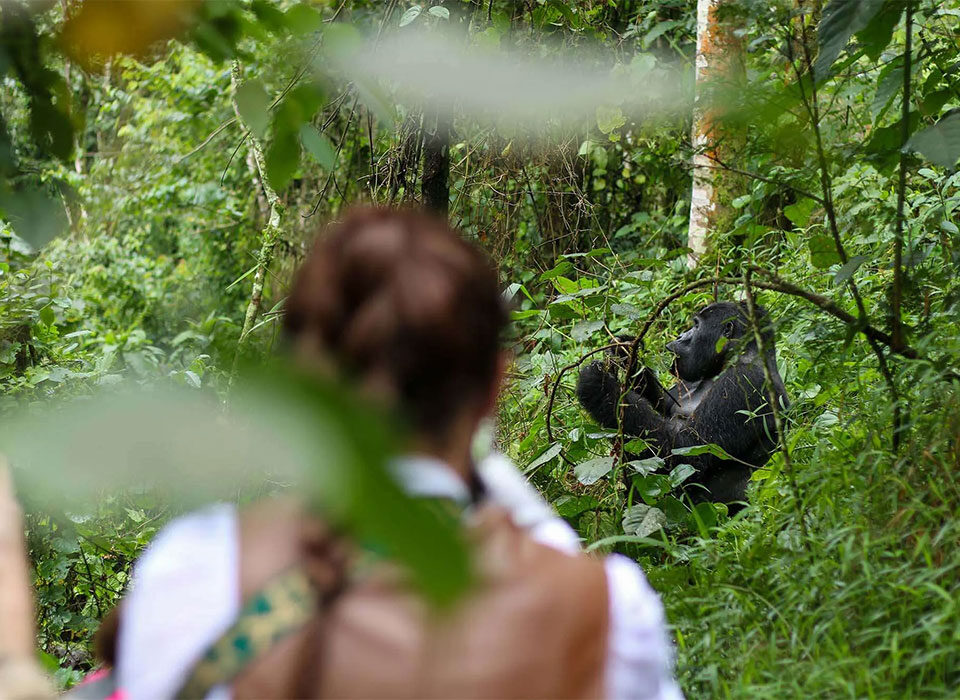
How Long Does a Rwenzori Trek Take – Trekking Routes, Duration & Tips with Experiya Tour Company
October 25, 2025
Top Cultural Experiences to Have in Uganda | Experiya Tour Company
October 29, 2025Who Are the Batwa Pygmies and How to Visit Them in Uganda and Rwanda | Experiya Tour Company
Who Are the Batwa Pygmies and Can I Visit Them?
Deep within the emerald highlands of southwestern Uganda and the misty jungles of Rwanda and the Democratic Republic of Congo live the Batwa pygmies, one of Africa’s oldest and most fascinating indigenous tribes. Known as the original forest dwellers of the Great Lakes region, the Batwa once lived in harmony with the gorillas, monkeys, and elephants that roamed the rainforests. Their story, however, is one of both beauty and heartbreak—an ancient people forced out of their ancestral home in the name of conservation, yet still radiating warmth, resilience, and a profound cultural identity that continues to enchant visitors from around the world.
The Batwa pygmies are widely believed to be the first inhabitants of the equatorial forests of Central Africa. For thousands of years, they thrived as hunters and gatherers, relying on the forest for food, medicine, and shelter. They are often referred to as “the Keepers of the Forest” because their traditional knowledge of nature is unmatched. Every plant, tree, and sound in the forest carried meaning; it was both their supermarket and their spiritual temple.
When Uganda’s Bwindi Impenetrable and Mgahinga Gorilla National Parks were gazetted in the early 1990s to protect the critically endangered mountain gorillas, the Batwa’s way of life changed forever. They were evicted from their ancestral forests without compensation or alternative livelihoods. Overnight, they became conservation refugees—displaced, marginalized, and struggling to survive in a world that suddenly viewed their forest existence as illegal. This painful displacement marks one of the most tragic consequences of conservation policy in East Africa, but it also gave rise to one of the region’s most inspiring stories of cultural revival and resilience.
Today, many Batwa communities live in small settlements on the edges of Bwindi and Mgahinga National Parks in Uganda, as well as around Volcanoes National Park in Rwanda and Kahuzi-Biéga in Congo. Despite years of hardship, the Batwa have found new ways to share their culture with the world. Through community tourism and cultural initiatives, visitors can now learn about their traditions, listen to their songs, watch their dances, and even participate in forest walks that recreate their ancient way of life.
The Origin and Identity of the Batwa
The Batwa are part of a larger group of Central African forest peoples often referred to as pygmies, a term historically used to describe various small-statured groups across Africa’s tropical forests. However, “Batwa” is the preferred term today because it is rooted in their own language and identity. Traditionally, the Batwa stood at the heart of the forest’s ecological balance. They hunted small animals using bows and arrows, gathered fruits and honey, and crafted shelters from leaves and bark. Every Batwa child grew up learning how to identify medicinal plants, follow animal tracks, and listen to the forest’s secrets.
Their spiritual life revolved around deep respect for nature. The forest was sacred, inhabited by spirits that guided their lives. The Batwa believed that disturbing this balance—by overhunting or disrespecting the land—would bring misfortune. This spiritual worldview made them natural conservationists long before the concept was formalized. Ironically, it was modern conservation efforts that led to their displacement.
Despite the challenges of losing their land, the Batwa have maintained a strong sense of identity through storytelling, song, and dance. Their music is rhythmic and soulful, blending haunting melodies with the beat of drums and the rustle of grass instruments. When they sing, it feels as if the forest itself is speaking—whispering stories of creation, loss, and endurance.
What Happened to the Batwa After Eviction?
The creation of Bwindi and Mgahinga National Parks was vital for protecting mountain gorillas, but for the Batwa, it meant losing everything. They were not recognized as rightful landowners, and their eviction left them landless and impoverished. Many were forced to live as squatters or cheap laborers on neighboring farms. Without access to their forest home, traditional skills like hunting and herbal medicine became obsolete. Poverty, malnutrition, and marginalization became part of daily life.
Over time, organizations began to recognize the injustice of this situation and started working with the Batwa to improve their livelihoods. NGOs, churches, and government programs introduced education, healthcare, and sustainable income projects. Some Batwa communities began creating cultural tourism initiatives that allowed them to earn income while sharing their rich heritage.
In Uganda, one of the most popular and respectful ways to meet the Batwa is through the Batwa Trail in Mgahinga Gorilla National Park. This experience was developed in partnership with the Uganda Wildlife Authority and the United Organization for Batwa Development (UOBDU). During the trail, visitors hike through the forest with Batwa guides who demonstrate traditional hunting techniques, fire-making, honey-gathering, and herbal medicine preparation. The tour ends in a symbolic cave once used for shelter and rituals, where stories of their spiritual connection to the forest come alive.
Another remarkable initiative is the Batwa Experience near Bwindi Impenetrable Forest, created by the Batwa Development Program. Here, visitors are welcomed into a recreated forest village where elders teach ancient survival skills and share personal stories about life before the eviction. The visit culminates with traditional dances and songs that celebrate their culture and resilience.
These encounters are more than cultural performances—they are acts of preservation. They give the Batwa an opportunity to earn income, educate visitors about their history, and restore dignity to a community that was once voiceless.
Visiting the Batwa Communities Today
Yes, you can absolutely visit the Batwa pygmies—and doing so can be one of the most meaningful cultural experiences in East Africa. When planned responsibly, these visits benefit both travelers and the Batwa communities. Visitors gain insight into a vanishing culture and the chance to support sustainable tourism that uplifts marginalized people. The Batwa, in turn, gain an audience for their traditions and a sustainable source of income.

Most visits are organized in partnership with local community groups and tour operators who ensure that proceeds go directly to the Batwa families. Tours can be half-day or full-day experiences, and they often include storytelling sessions, craft demonstrations, and dance performances. The experience is deeply personal—visitors interact directly with Batwa elders and families rather than through staged exhibits.
It is important, however, to approach these visits with respect and sensitivity. The Batwa have endured centuries of discrimination and displacement, so visitors should avoid treating their communities as tourist spectacles. Responsible travel involves engaging genuinely, listening more than photographing, and supporting projects that are community-led.
Why Visiting the Batwa Matters
Meeting the Batwa offers more than just a cultural encounter—it’s an opportunity to witness the resilience of human spirit. It’s about understanding the complex intersection of culture, conservation, and identity. The Batwa’s story reminds us that wildlife conservation must also consider the rights and wellbeing of the people who have lived in harmony with nature for generations.
Supporting Batwa tourism helps preserve not only their culture but also their future. Every visitor contributes to initiatives that provide healthcare, education, and land rights advocacy. Many Batwa children are now attending school for the first time because tourism income supports their communities. By visiting responsibly, travelers become part of a global movement to protect cultural diversity as passionately as we protect biodiversity.
Planning Your Visit
Most Batwa cultural tours are easily accessible from popular gorilla trekking destinations. If you’re visiting Bwindi Impenetrable National Park, you can join the Batwa Experience near Buhoma or Nkuringo. From Mgahinga Gorilla National Park, the Batwa Trail is an unforgettable addition to your itinerary. You can also combine your cultural experience with gorilla trekking, golden monkey tracking, or scenic hikes around the Virunga Volcanoes.
Travelers can visit at any time of the year, though the dry seasons—from June to September and December to February—offer the most comfortable hiking conditions. When planning your trip, ensure you book through a reputable tour company that works closely with Batwa communities and the Uganda Wildlife Authority. This guarantees a meaningful, ethical, and well-organized experience that respects both the people and the environment.
Why You Should Travel With Experiya Tour Company
For travelers seeking to visit the Batwa pygmies and explore the enchanting landscapes of Uganda, Rwanda, and beyond, Experiya Tour Company offers the ideal balance of authenticity, expertise, and ethical tourism. The company partners with local communities to ensure that your visit directly benefits the Batwa people while providing you with a seamless, enriching adventure. Their guides are knowledgeable about the Batwa’s culture, history, and the conservation story surrounding gorilla trekking, ensuring that every moment of your journey is meaningful.
With Experiya Tour Company, your experience is more than a tour—it’s a connection. Whether you’re exploring the mist-shrouded forests of Bwindi, trekking to see gorillas in their natural habitat, or sitting around a fire listening to Batwa elders share their stories, you’ll feel a deeper bond with East Africa’s people and landscapes. The company’s commitment to responsible travel means your journey leaves a positive footprint, empowering the communities you visit.
Book your next journey with Experiya Tour Company and experience the heart of Africa through the eyes of its original custodians—the Batwa. Discover their culture, celebrate their resilience, and help preserve a heritage that has endured for centuries.



